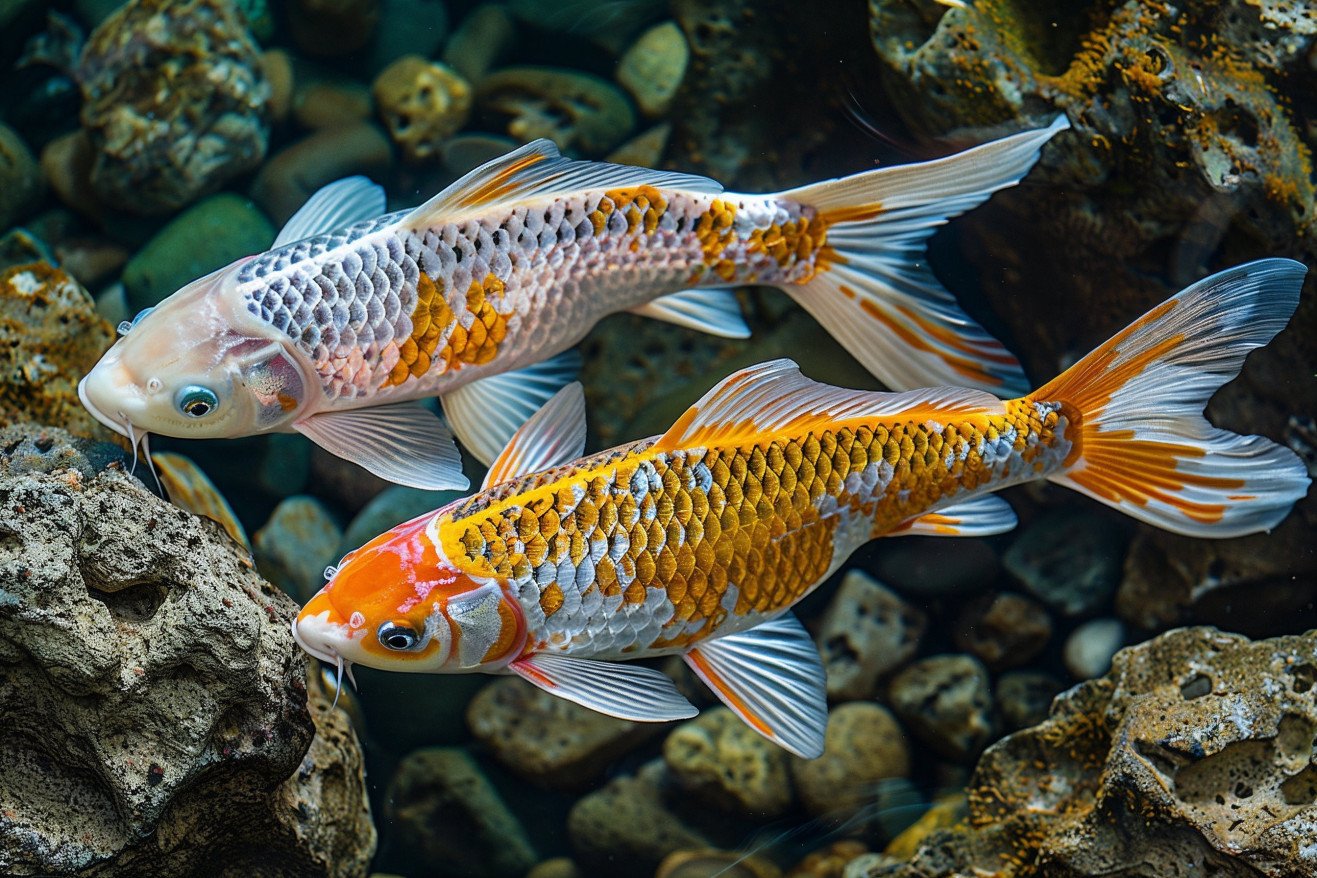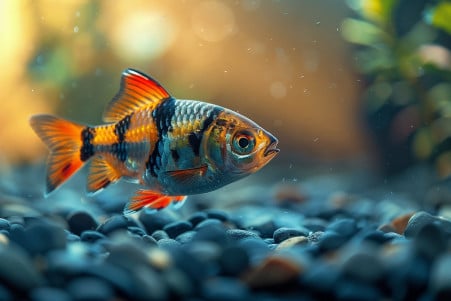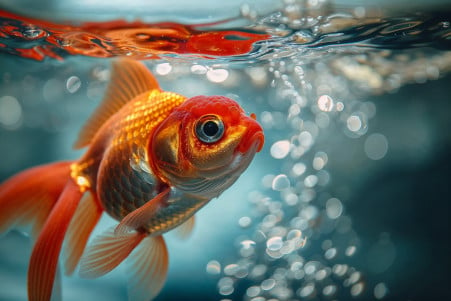Fish Fin Regeneration: Can They Regrow After Amputation?
28 April 2024 • Updated 27 April 2024

The loss of a fin can be a traumatic event for a fish, but the good news is that fish have an amazing ability to regenerate these important body parts—as long as the right conditions are present. Fish fins can be regenerated after injury or amputation through a process called epimorphic regeneration, which involves the proliferation and reorganization of cells to restore the complex fin structures over a period of weeks or months. However, the ability of the fin to regenerate and the speed at which it does so depends on a number of factors, including the severity of the injury, the age and species of the fish, and the quality of its environment.
In this article, we will explore the phenomenon of fin regeneration in fish by looking at research in the fields of developmental biology, epigenetics, and regenerative medicine. This work has implications for aquarium enthusiasts and conservationists, as well as for the development of new therapies for human tissue and organ regeneration. By learning about the biological processes that enable fish to regenerate amputated fins, you will also come to better understand the amazing regenerative abilities of the natural world.
Can fish fins grow back after amputation?
The Biological Processes of Fin Regeneration
Following fin amputation, an epithelial layer rapidly forms over the wound site within hours. This is succeeded by the formation of a blastema - a mass of proliferative progenitor cells - within 1-2 days, as reported by a study published in eLife.
The blastema is derived from the migration and dedifferentiation of multiple cell types in the vicinity of the stump, including fibroblasts and osteoblasts. As outlined in WIREs Developmental Biology, several conserved signaling pathways such as Wnt, FGF, Notch, and retinoic acid are involved in the regulation of blastema formation, cell proliferation, and the reestablishment of the regenerating fin's pattern.
In the blastema, the distal region serves as an organizer that specifies the outgrowth and patterning of the regenerated fin through the secretion of signals like Wnt. In contrast, cells in the proximal blastema maintain high rates of proliferation and progressively redifferentiate to restore the different components of the lost fin's tissues, as summarized in eLife. This complex series of events ultimately results in the accurate regeneration of the amputated fin.
Factors That Impact Fin Regeneration Capacity
The capacity for fish to regenerate fins is impacted by a number of factors, including the age of the fish, the species, the severity of the initial injury, and environmental factors. As noted in Can Fish Regrow Fins: The Remarkable Science of Fin Regrowth, younger fish tend to regenerate their fins more quickly than older fish. In addition, different fish species have different levels of fin regeneration capacity, which may be the result of evolutionary differences.
The Regrowth of zebrafish caudal fin regeneration is determined by the amputated length study found that the length and location of the initial injury or amputation can impact the regenerative response, with fin rays amputated closer to the body showing longer regrowth periods and higher regrowth rates than those amputated farther away.
In addition, environmental factors such as water quality, temperature, and the presence of pathogens can also impact the ability of fins to regrow, as noted in Can Fish Regrow Fins: The Remarkable Science of Fin Regrowth. More recently, research has suggested that the microbiome and probiotics may impact the pathways involved in fin regeneration, as shown in the Zebrafish caudal fin as a model to investigate the role of probiotics in bone regeneration study.
Knowing these different factors that impact the capacity for fin regeneration is important for developing ways to encourage and support this amazing ability in fish.
Regenerative Patterns and Quantitative Analysis
The speed and amount of fin regeneration is dependent on the proximal-distal level of amputation. In fact, this study found that proximal amputated fin rays had longer regeneration periods and higher regeneration rates than distal amputations.
In order to quantify fin regeneration and mineralization, researchers have come up with standardized measures such as the REG/STU ratio and RMA. The REG/STU ratio standardizes the regenerated area, while the RMA (real mineralized area) measures the actual mineralized part of the fin, excluding the non-mineralized parts of the fin.
This quantitative analysis has also found that there are three phases of regeneration: initial wound healing, linear outgrowth, and continued mineralization. By looking at these phases, researchers can study the effects of different compounds and treatments on the process of fin regeneration.
Through the use of these standardized measures and an understanding of the patterns of regeneration, researchers can learn more about the mechanisms that underlie this incredible ability in fish.
Evolutionary Perspectives and Species Differences
The capacity to regenerate appendages, such as fins and limbs, is present in a variety of vertebrate lineages, including fish and amphibians. Research indicates that appendage regeneration originated in the Osteichthyes lineage, before the split between ray-finned and lobe-finned fish.
Transcriptomic studies have shown that there are highly conserved genetic programs that are used in the regeneration of fish and salamander fins and limbs. In fact, some fish, such as the Senegal bichir and ropefish, can even regenerate endoskeletal components in addition to their fins.
Yet, the ability to regenerate can be age- and developmental stage-dependent, as is the case with zebrafish endoskeletal regeneration, suggesting that while the ability to regenerate appendages originated early, it may be constrained by development and aging in some species.
These evolutionary perspectives and species-specific differences in regenerative abilities may help researchers better understand how to develop new regenerative therapies for humans.
Clinical Applications and Regenerative Medicine
Studies of fin regeneration in fish have clinical relevance for the development of treatments that can help human tissue heal and regenerate, according to the Zebrafish for Personalized Regenerative Medicine study. This is because the cellular and molecular processes that underlie fin regeneration could be used to develop therapies for degenerative diseases and injuries, as noted in the Inserm Newsroom article.
The same signaling pathways, such as Wnt, FGF, and Notch, that control fin regeneration are also involved in human embryonic development and wound healing. One study even suggested that manipulating these pathways and finding molecules like colomitide C that can promote regeneration could be used to treat patients.
In fact, the zebrafish model has already been used to identify natural molecules that can manipulate the pathways that control fin regeneration and that have clinical potential, as shown in the study. In the end, the study of fish fin regeneration may help researchers develop new ways to help human tissues regenerate.
Conclusion: Using Fish Fin Regeneration to Help Humans
The fact that fish can regenerate their fins is an amazing example of the regenerative powers of nature. By learning more about the cellular and molecular processes that drive fin regeneration, researchers have been able to learn more about how tissue repair works.
There are a number of factors that can impact how well regeneration occurs, including age, species, the severity of the injury, and the environment. Newer studies have shown that the microbiome and probiotics may be able to help control the pathways that lead to regeneration. In the end, the study of fin regeneration in fish may help researchers develop new ways to help human tissues regenerate.


